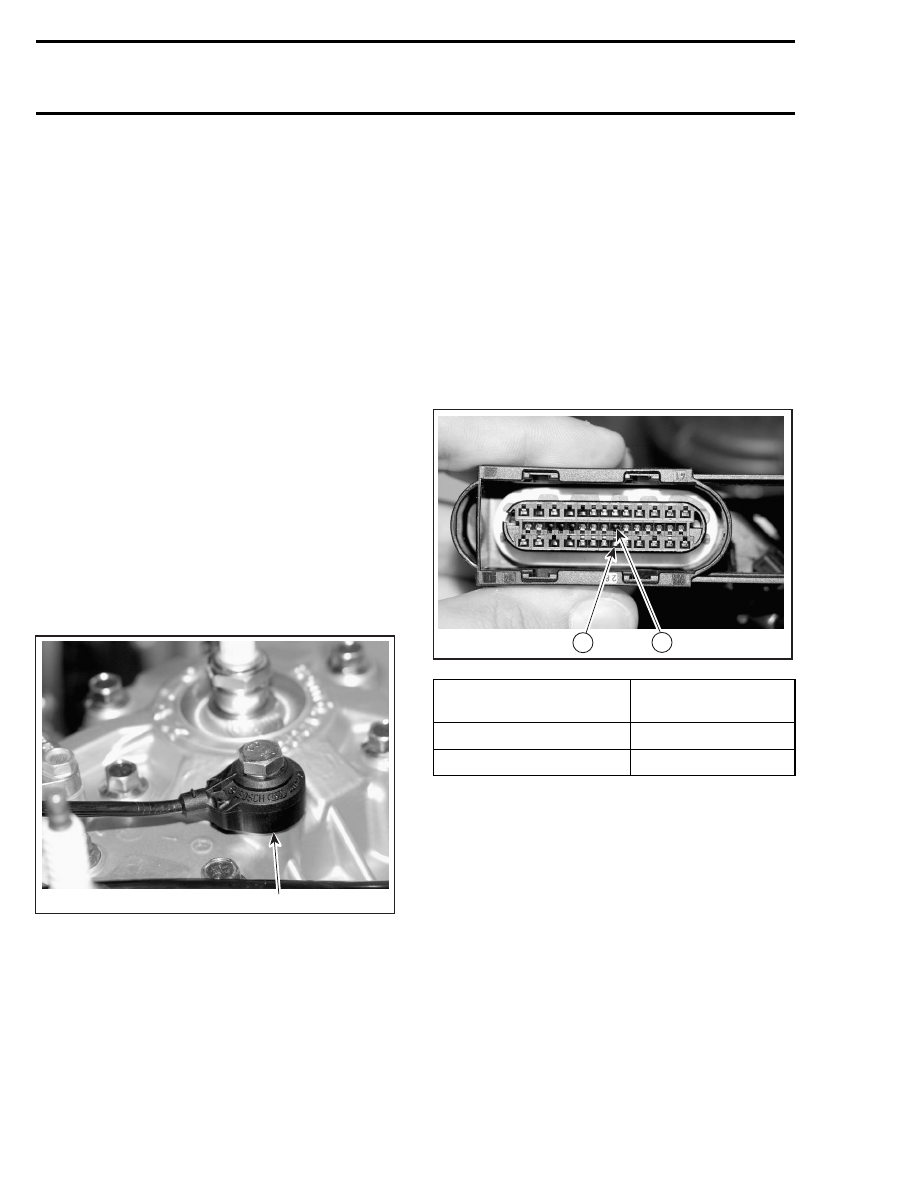Snowmobile Ski Doo REV SERIES (2006 year). Instruction - part 69

Section 06 ENGINE MANAGEMENT (SDI)
Subsection 03 (COMPONENT INSPECTION, REPLACEMENT AND ADJUSTMENT)
Refer to TEMPERATURE SENSOR TABLE at the
beginning of this section to find the corresponding
resistance value for this sensor temperature.
If out of specification, replace the sensor.
If resistance tests good, reconnect the EGTS and
disconnect the connector A on the ECM.
Using a multimeter, recheck resistance value be-
tween terminals 10 and 26.
If resistance value is correct, try a new ECM. Refer
to ECM REPLACEMENT procedures elsewhere in
this section.
If resistance value is incorrect, repair the connec-
tor or replace the wiring harness between ECM
connector and the EGTS.
Replacement
Disconnect EGTS connector and remove EGTS.
Apply anti-seize lubricant (P/N 293 800 070) over
EGTS threads to prevent possible seizure.
Torque the new EGTS to 45 N•m (33 lbf•ft).
Replug connector.
KNOCK SENSOR (KS)
1
A32C9ZA
1. Knock sensor (KS)
Dynamic Test
Lift rear of vehicle off the ground and support it
with a wide-base mechanical stand.
Using the vehicle communication kit (VCK) with
the B.U.D.S. software, monitor the knock sensor
using the Faults section.
Start the engine and bring engine RPM above
6000 RPM. If no fault code occurs, the knock
sensor is good.
Otherwise, do the following.
Ensure sensor and head contact surfaces are
clean and mounting bolt and washer are correct
and properly torqued down.
Check the knock sensor circuit on wiring harness.
Disconnect the connector from knock sensor har-
ness.
Disconnect connector A form the ECM and check
continuity of circuit as per following table.
A32C9NB
22
8
CIRCUIT NUMBER (ECM
CONNECTOR A)
KS CONNECTOR
A-22
PIN 1
A-8
PIN 2
If test is not good, repair the connector or replace
the wiring harness between ECM connector and
knock sensor.
Replacement
Unscrew and remove knock sensor from cylinder
head.
Clean contact surface, apply Loctite 5910 (P/N 293
800 081) on both contact surfaces on the knock
sensor then install the new sensor.
CAUTION: Install screw and torque it within
10 minutes to prevent the sealant to dry be-
fore torquing. A dried sealant before torquing
would impair the knock sensor operation.
272
mmr2005-081